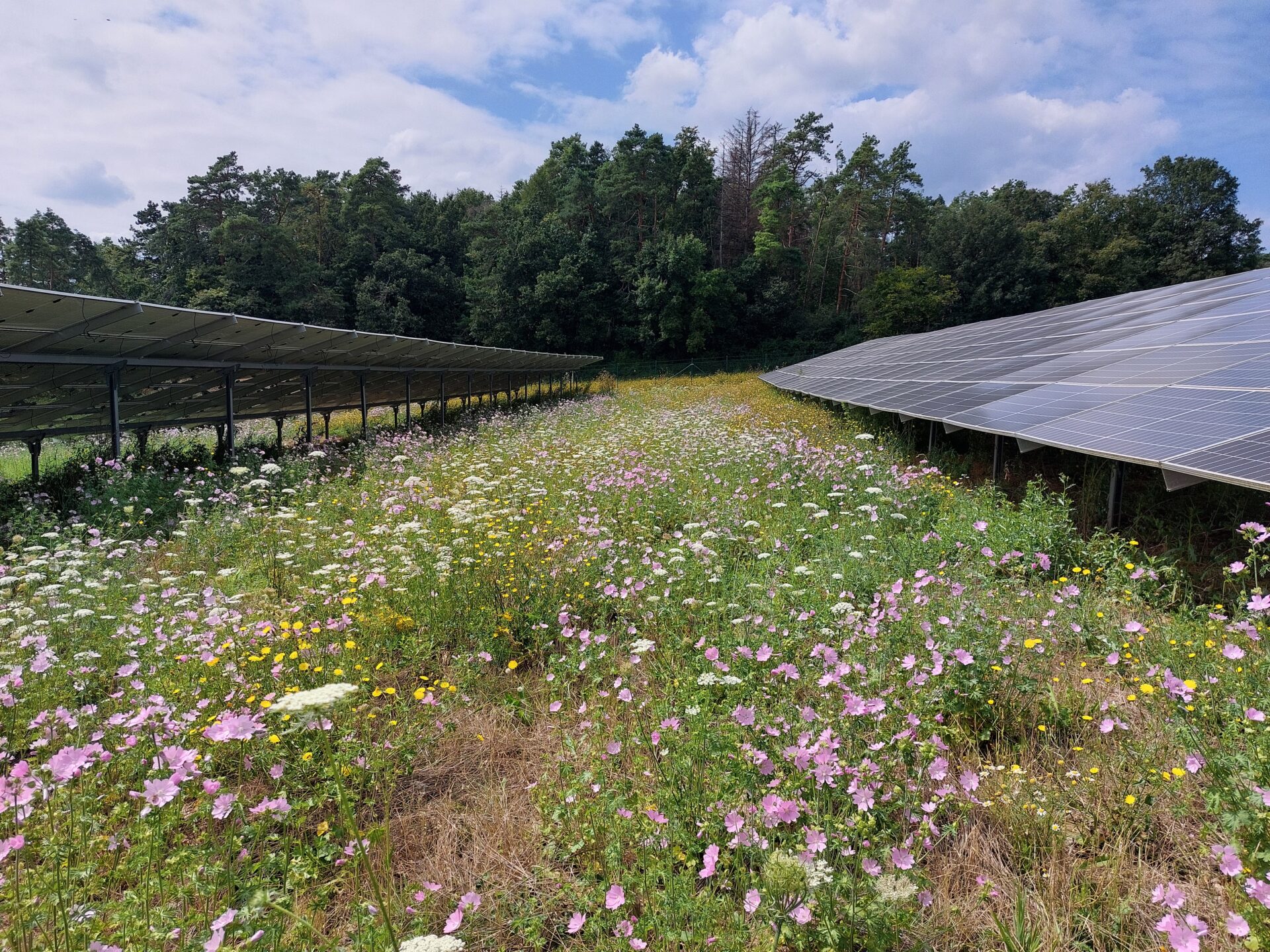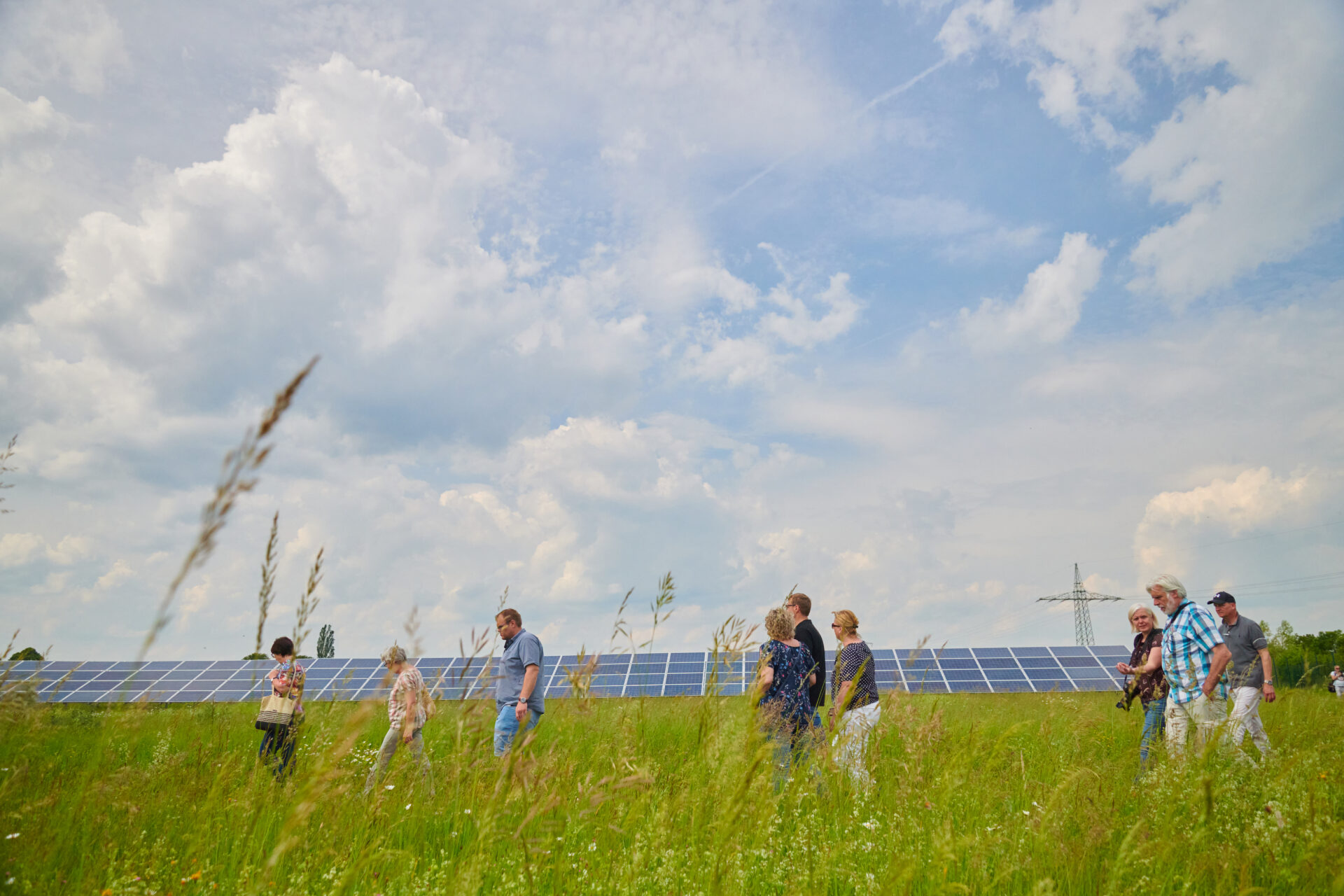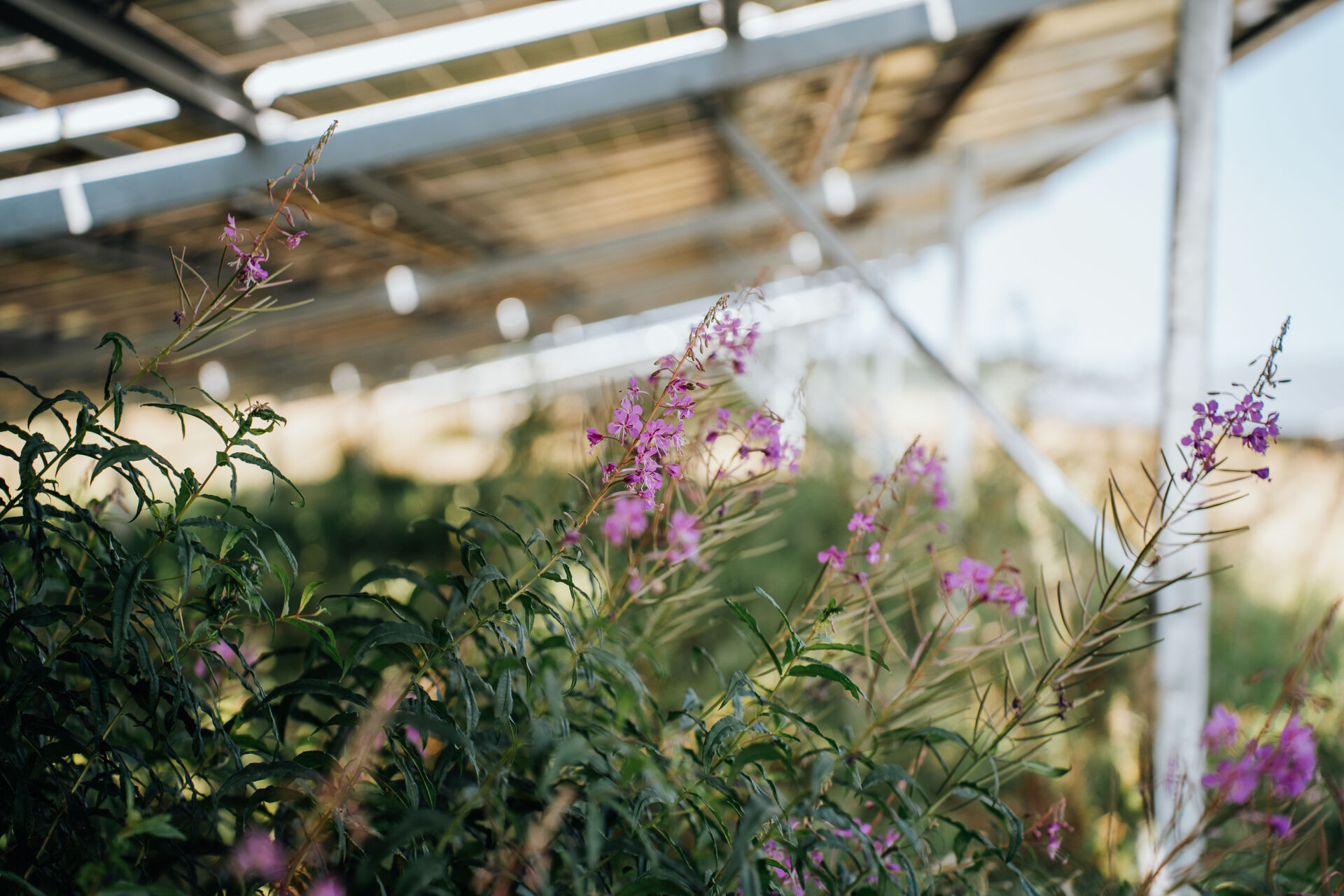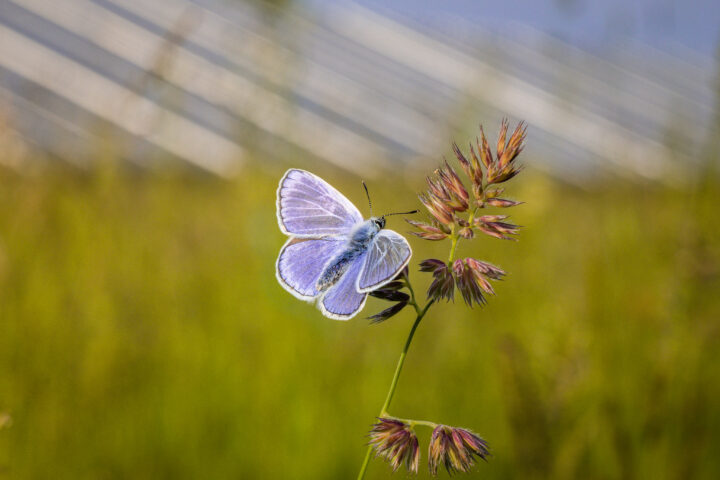The first results of the study "Biodiversity in solar parks - a nationwide field study" were presented on 26 September 2024 by Dr Tim Peschel, biologist and co-author of the study, at the bne summer party BNEW2024 was presented. Representatives from nature conservation, licensing authorities and the energy industry then discussed the topic of "Nature-friendly solar parks". The Publication of the study by the two authors Rolf Peschel and Dr Tim Peschel is available for the Spring 2025 planned as part of a conference.
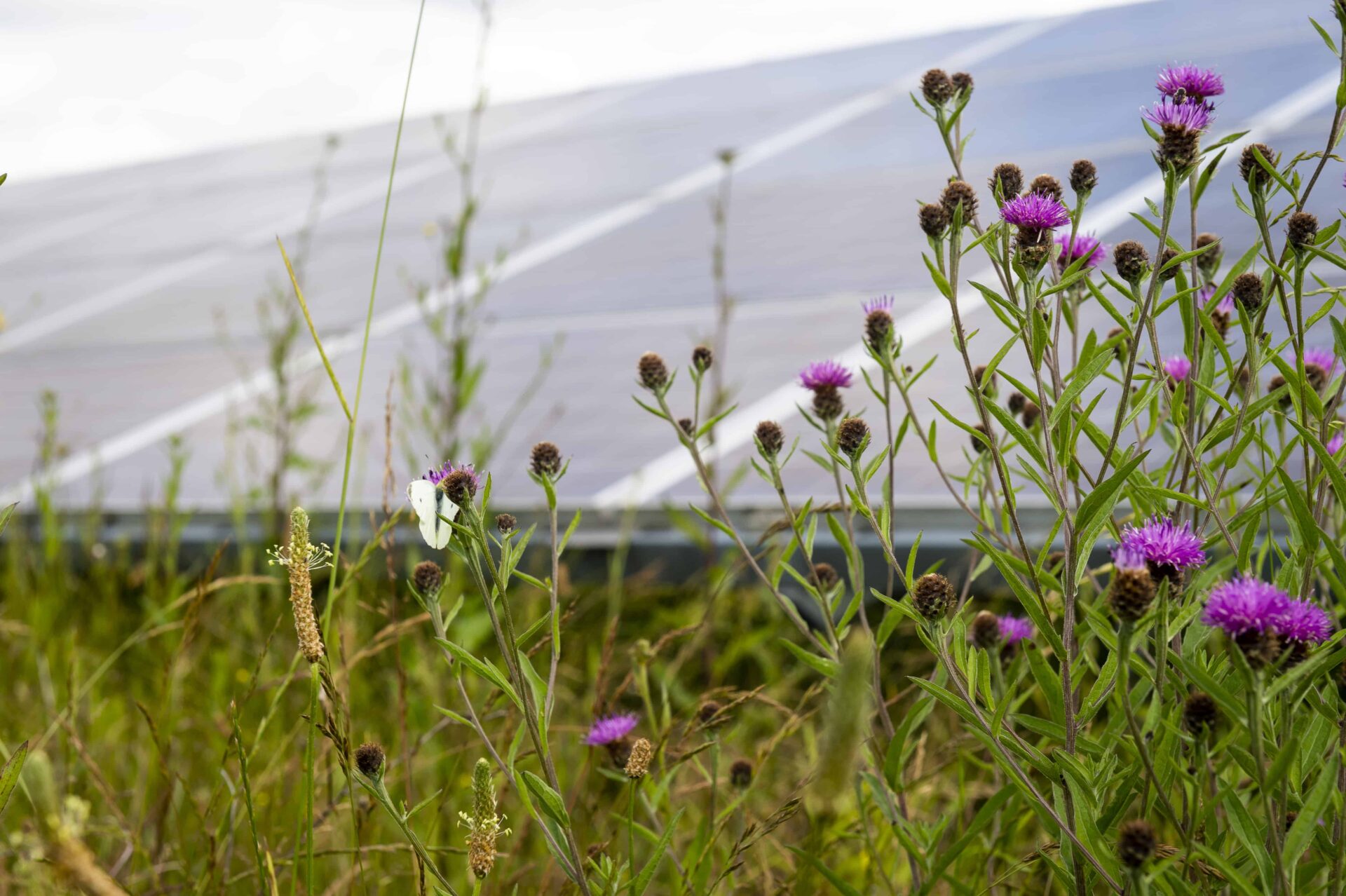
Continuation of the study "Solar parks - gains for biodiversity" (2019)
The study "Solar Parks - Gains for Biodiversity" published by the bne in 2019 already showed the value of solar parks in our intensively utilised cultural landscape. The new study aims to present the current state of biodiversity in solar parks even more accurately and up-to-date. To this end 25 plants in 10 federal states and one plant in Denmark analysed. A special focus was placed on Installations on agricultural land as this is where most solar parks have been built in recent years.
The initial findings
The nationwide studies took place from April to October 2024. The biologists collected data on different species groups such as birds, amphibians and plants. The first results were presented at the bne summer party BNEW2024 presented on 26 September 2024 by Dr Tim Peschel, biologist and co-author of the study. The initial results presented are mainly based on the Studies by the two authors Rolf Peschel and Dr Tim Peschel on plants, butterflies and grasshoppers. These are Preliminary resultsas the expert reports from the commissioned offices are not yet complete. Nevertheless, some interesting observations can already be made:
- The biologists found in the solar parks many animal and plant species whose populations are often declining in agricultural landscapes. is. In addition, the researchers were also able to endangered species such as the yellow and white dysentery or the Austrian speedwell can be demonstrated. While agricultural land offers hardly any habitat for different plants and animals, ground-mounted PV systems form structural elements in which a variety of species can colonise.
- Furthermore, the researchers estimate the Location diversity within the plants e.g. through permanent or temporary small bodies of water. They were also able to observe that the shading of the PV modules creates different habitats in a small spaceso that species from the forest edges colonise close to sun-loving species, which in turn use the sunlit spaces between the modules.
Download interim report
See English version below.
We have summarised an overview of the initial findings of the study for you in a handout. You can also download Dr Tim Peschel's presentation at BNEW2024 below. More information on the study and the solar parksthat were analysed can be found on SonneSammeln.
English Version
We summarised the inital results of the bne-study "Biodiversity in solar parks - a nationawide field study" in the following handout. Please feel free to download and spread the news.

